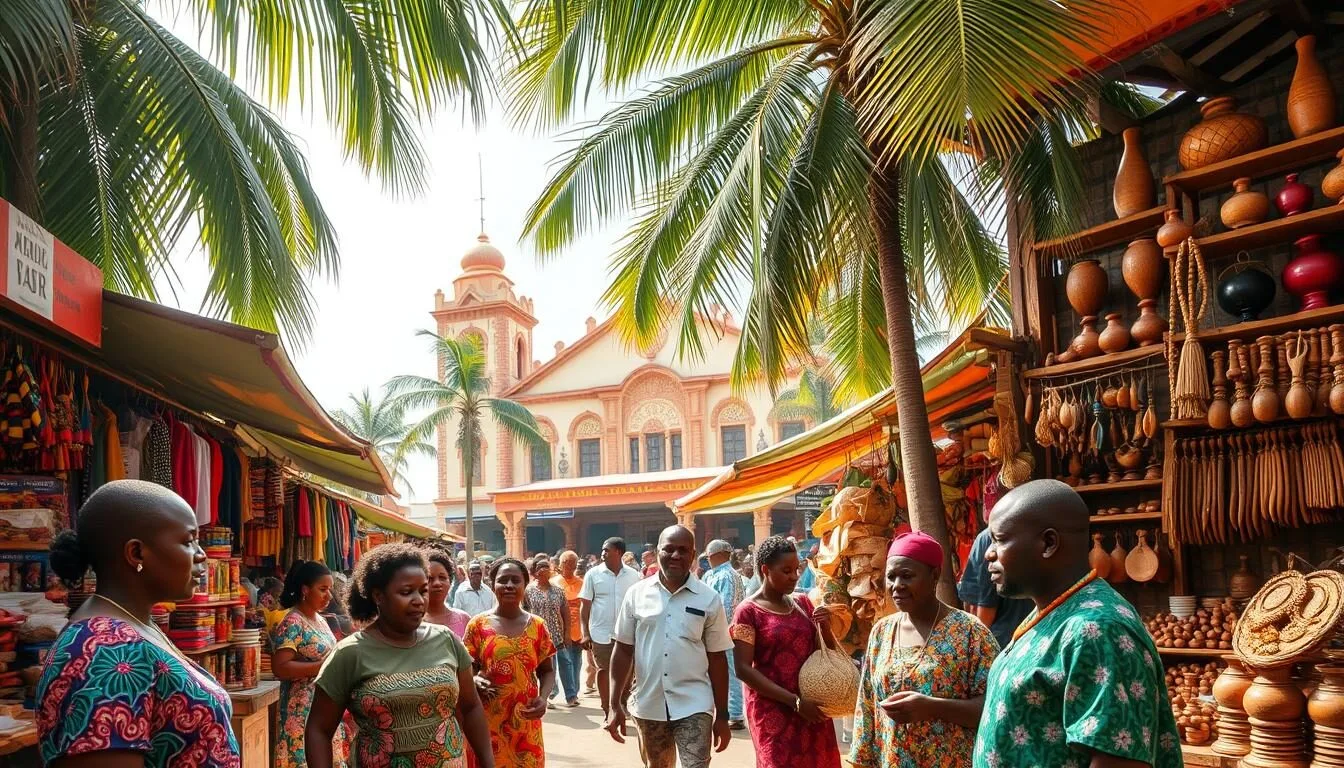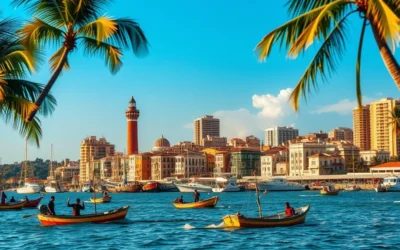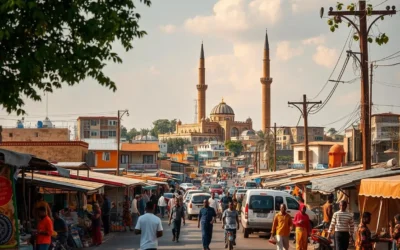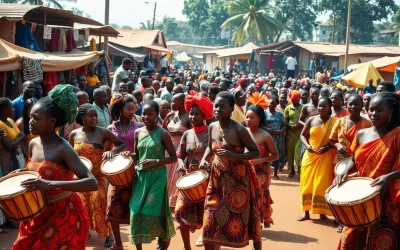✓ Accommodations ✓ Flights ✓ Rental Cars
You’ve probably heard that Kumasi is known as Ghana’s cultural heartbeat, but what makes it so special? This vibrant city is home to a rich heritage, shaped by the Ashanti Kingdom’s history and traditions.
As you explore this historic place, you’ll encounter warm people who are eager to share their stories and traditions. With numerous reviews praising its authenticity, Kumasi is an ideal destination for travelers seeking an immersive experience.
From its stunning cultural attractions to its hidden gems, Kumasi is a must-visit destination in West Africa. Get ready to uncover the top picks and make unforgettable memories in this incredible city.
Discovering Kumasi: Ghana’s Cultural Capital
As you step into Kumasi, you’re not just entering a city, you’re immersing yourself in the rich cultural heritage of Ghana. Kumasi has been the historic capital of the Ashanti Kingdom for centuries and continues to be the cultural center of the Ashanti people.
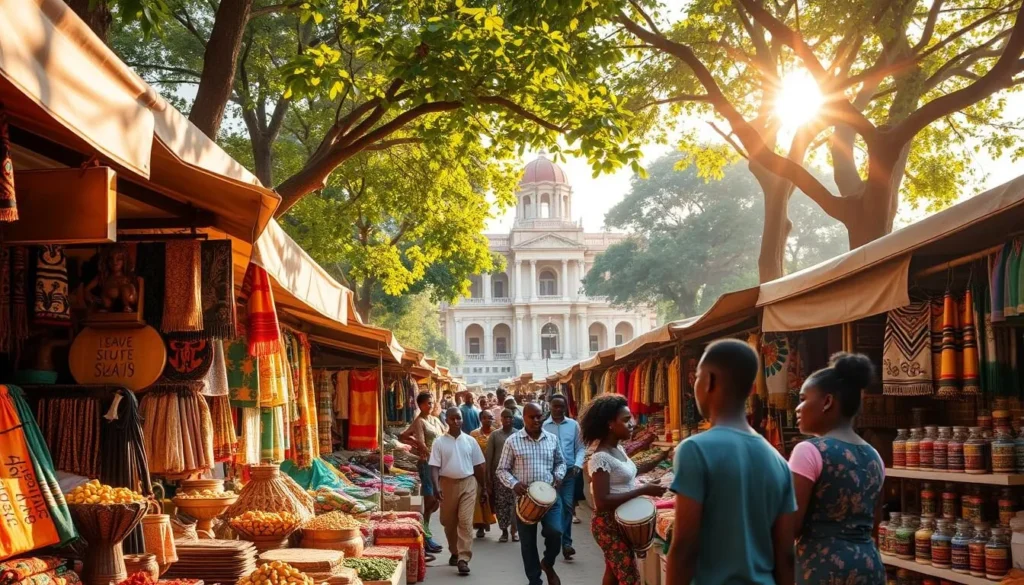
Historical Significance of Kumasi
Kumasi’s historical significance is palpable as you walk through its streets, where every landmark tells a story of the Ashanti Kingdom’s glorious past. The city’s role as the former capital is evident in its architecture, cultural practices, and the reverence with which its historical sites are regarded.
The city’s rich history is a major draw for visitors, offering a unique cultural experience that is both educational and enriching.
Best Time to Visit Kumasi
Understanding the best time to visit Kumasi can greatly enhance your trip. The city experiences a tropical climate, with two main seasons: the dry season and the rainy season.
- The dry season, from November to March, is characterized by less humid air and minimal rainfall, making it ideal for exploring outdoor attractions and visiting markets.
- The rainy season, from April to October, brings lush landscapes but may limit some outdoor activities.
Planning your visit according to these seasons can help you make the most of your experience in Kumasi. Consider allocating a few days to fully immerse yourself in the city’s cultural offerings.
Essential Cultural Tips for Visiting Kumasi
To truly appreciate Kumasi, it’s essential to grasp the cultural nuances that define this vibrant city. As you prepare to immerse yourself in the local way of life, understanding the customs and etiquette will make your experience even more rewarding.
Ghanaian Etiquette: Do’s and Don’ts
When interacting with the people of Kumasi, it’s helpful to know that Ghanaians are generally quite friendly and willing to help visitors get around. However, it’s also important to be aware of ‘professional friends’ who may have ulterior motives. To navigate these interactions successfully, be open-minded and maintain appropriate boundaries.
For instance, when visiting traditional places, dress modestly as a sign of respect. The communal nature of Ashanti culture means that social interactions in public places are often warm and engaging. Being mindful of your attire and behavior will help you fit in and show respect for the local customs.
Understanding Local Customs
Understanding the significance of traditional symbols and colors in Ashanti culture will enrich your experience in Kumasi. You’ll encounter these symbols in various contexts, from ceremonies to everyday life. Being aware of their meanings will help you appreciate the depth of the local culture.
| Custom | Significance |
|---|---|
| Dress Code | Modest dressing is required when visiting traditional places or attending ceremonies. |
| Social Interactions | Ashanti culture is communal; be prepared for warm and engaging social interactions. |
| Traditional Symbols | Understanding the significance of symbols and colors will enhance your cultural experience. |
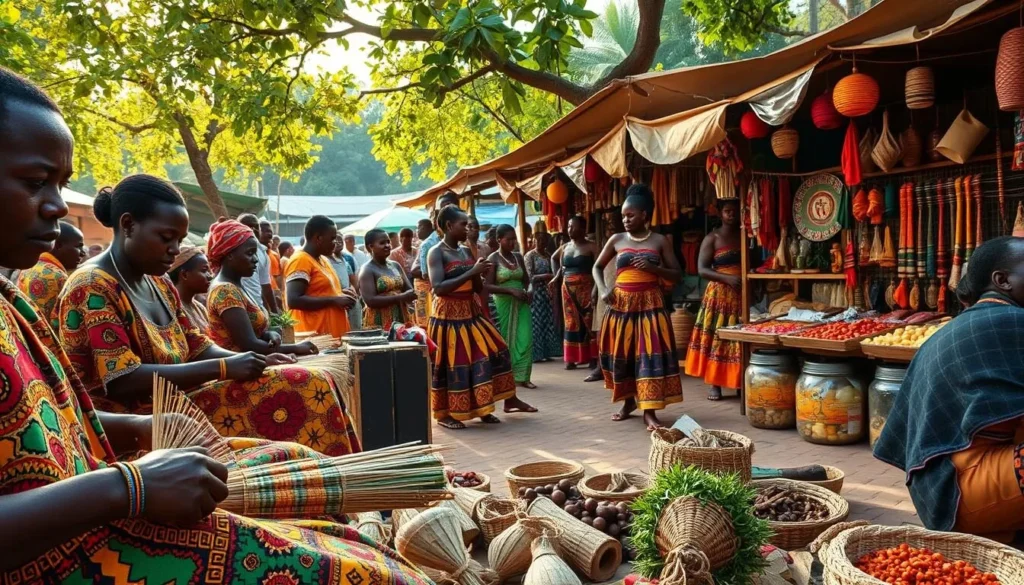
By being mindful of these cultural practices, you’ll not only show respect for the place and its people but also have a more meaningful and enjoyable experience in Kumasi.
Explore the Legendary Kejetia Market

Kejetia Market, with its labyrinthine stalls and bustling atmosphere, offers a unique glimpse into the heart of Kumasi’s commercial and cultural hub. As West Africa’s largest market, it is a must-visit destination for anyone traveling to Ghana.
Navigating West Africa’s Largest Market
Navigating Kejetia Market can be an adventure in itself. With thousands of stalls selling everything from local handicrafts to fresh produce, it’s easy to get lost in the crowd. However, with a little preparation and insider knowledge, you can make the most of your visit. Start by exploring the market’s layout and identifying the different sections, such as the areas dedicated to clothing, food, and crafts.
Understanding the market’s structure will help you find what you’re looking for more efficiently. Don’t be afraid to ask vendors for directions or recommendations – they’re usually happy to help.
Bargaining Tips for Visitors
Bargaining is an integral part of the Kejetia Market experience. When shopping, remember that the initial price offered by vendors is often negotiable. A good rule of thumb is to start at one-third of the stated price and work your way up to a mutually agreeable amount, typically around half of the original cost.
- Master the art of bargaining by starting with a low offer.
- Recognize when a vendor’s price is fair or inflated.
- Understand that bargaining is a social exchange, not just about saving money.
- Look for subtle signals from vendors indicating their final price.
- Maintain a friendly demeanor throughout negotiations.
Walking away can sometimes prompt a vendor to accept your offer, but be aware that if they don’t follow you, your initial offer might have been too low. The key is to be respectful and enjoy the process – it’s all part of the shopping experience at Kejetia Market.
Visit the Manhyia Palace Museum
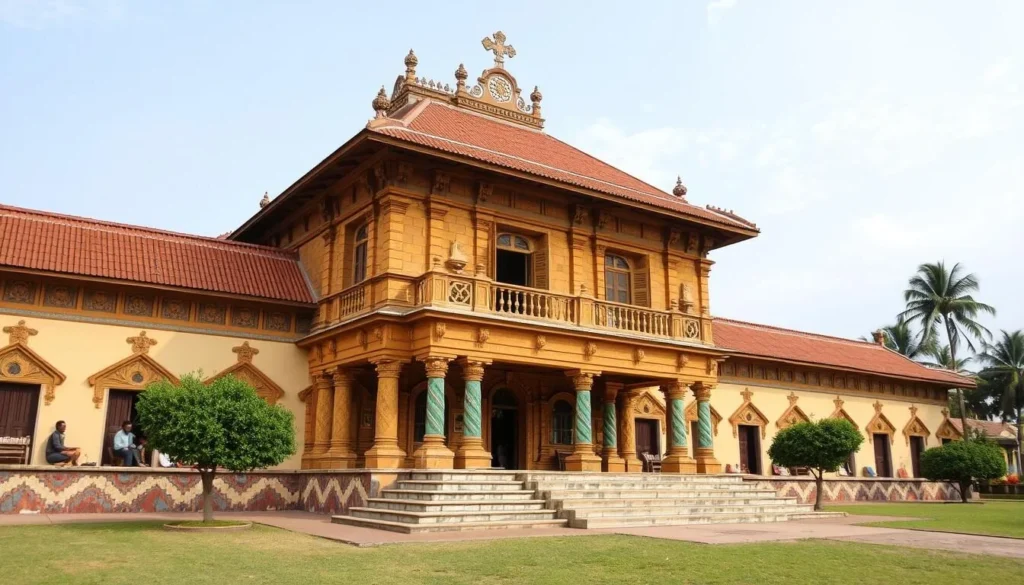
As you step into the Manhyia Palace Museum, you’re about to uncover the rich history and cultural heritage of the Ashanti Kingdom. This museum is a treasure trove of royal artifacts, historical documents, and cultural exhibits that tell the story of the Ashanti nation.
History of the Ashanti Kingdom
The Ashanti Kingdom has a storied past, with its history deeply intertwined with the traditions and customs of the Ashanti people. The kingdom’s evolution is reflected in the various items on display at the museum, including royal regalia and ceremonial objects.
For a deeper understanding, visitors can embark on a tour of the museum, which provides insights into the kingdom’s history and cultural practices.
Royal Artifacts and Cultural Exhibits
The museum boasts an impressive collection of royal artifacts, including the symbolic golden stool, which, according to traditions, contains the soul of the Ashanti nation. Visitors can also examine historical photographs, documents, and personal items belonging to past Ashanti kings.
- Discover the impressive collection of royal regalia, including the symbolic golden stool.
- Examine historical photographs, documents, and personal items belonging to past Ashanti kings.
- Learn about the significance of various ceremonial items displayed in the museum.
- Benefit from knowledgeable guides who enhance your experience with stories and context.
- Understand the protocols for visiting during times when royal ceremonies might be taking place.
By visiting the Manhyia Palace Museum, you will gain a richer understanding of the Ashanti Kingdom’s history and cultural heritage, making for a memorable experience.
Experience Ashanti Craftsmanship at Ntonso Adinkra Village
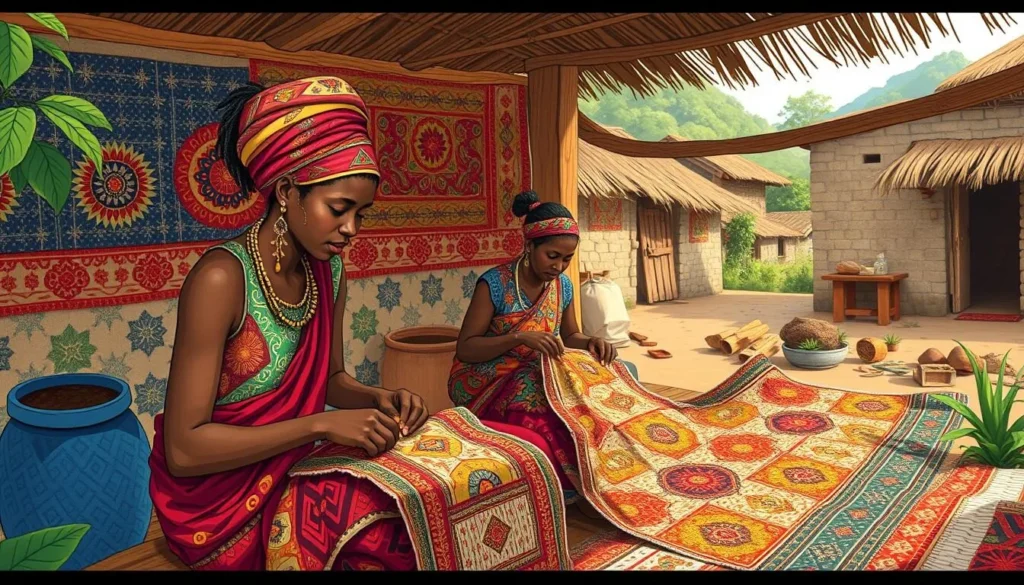
Immerse yourself in the rich cultural heritage of the Ashanti people by visiting Ntonso Adinkra Village. This cultural hub is renowned for its traditional Adinkra cloth making, a craft that has been passed down through generations.
Traditional Adinkra Cloth Making
The art of Adinkra cloth making is a significant aspect of Ashanti culture. Skilled craftspeople use traditional calabash stamps and natural dyes to create intricate designs on cloth. You can witness this meticulous process firsthand and gain insight into the symbolism behind the Adinkra symbols.
The Adinkra symbols are more than just decorative; they convey messages and tell stories that are integral to Ashanti heritage. By understanding these symbols, you can appreciate the depth of the culture.
Participate in a Cloth-Making Workshop
Engage in a hands-on workshop where you can learn to create your own Adinkra cloth under the guidance of master craftspeople. You can select meaningful Adinkra symbols that resonate with your personal journey or values to incorporate into your fabric design.
- Experience the satisfaction of stamping symbols onto cloth using traditional techniques.
- Take home your handmade Adinkra cloth as a meaningful souvenir.
- Combine your workshop with a guided tour of the village to understand the complete process from bark harvesting to finished fabrics.
By participating in the workshop and tour, you will gain a deeper appreciation for Ashanti craftsmanship and take home unique items that reflect your experience.
Explore the National Cultural Centre
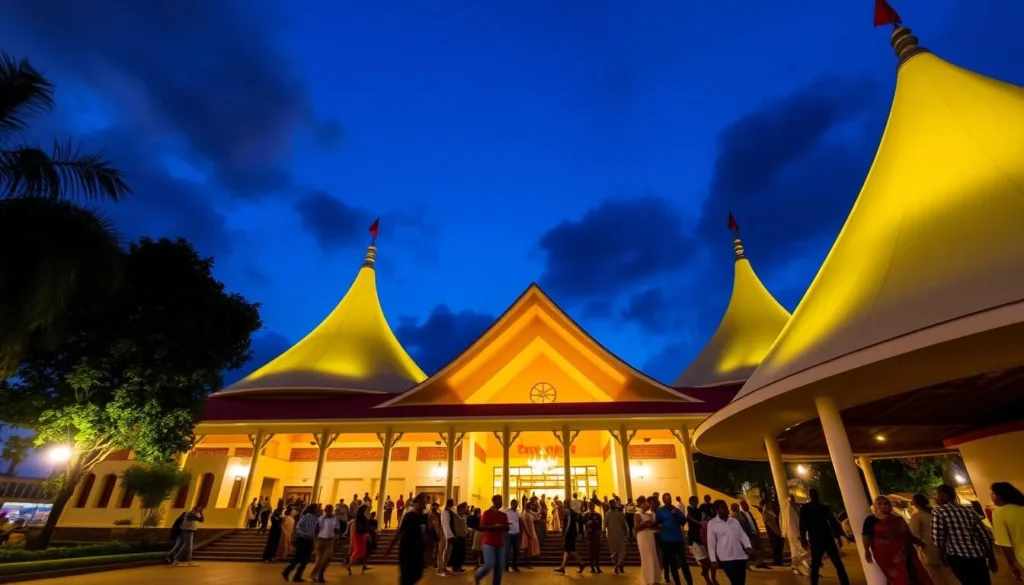
The National Cultural Centre in Kumasi is a treasure trove of Ghanaian culture, offering a unique blend of traditional crafts, performances, and exhibitions. As you step into the centre, you’re surrounded by the rich heritage of the Ashanti people, making it an ideal place to experience the authentic culture of Ghana.
Cultural Performances and Exhibitions
The National Cultural Centre is known for its captivating cultural performances and exhibitions that showcase the traditions and history of the Ashanti kingdom. You can witness traditional dance performances, listen to local music, and explore exhibitions that highlight the cultural significance of various artifacts.
Craft Shopping Opportunities
One of the highlights of visiting the National Cultural Centre is the extensive craft market where artisans sell authentic handmade items directly to visitors. You can:
- Browse through the market and discover unique crafts, including wood carvings, brass figurines, handwoven baskets, and beaded jewelry.
- Compare the shopping experience here to Kejetia Market, noting the more relaxed atmosphere and generally fixed price structure.
- Learn about the craftsmanship behind various items from the artisans themselves, who often work on new pieces while selling at their stalls.
- Find high-quality souvenirs with certificates of authenticity, ensuring you’re purchasing genuine Ashanti crafts rather than imported replicas.
This craft market offers a great shopping experience, with a wide range of items available at competitive prices.
Visit the Okomfo Anokye Sword Site
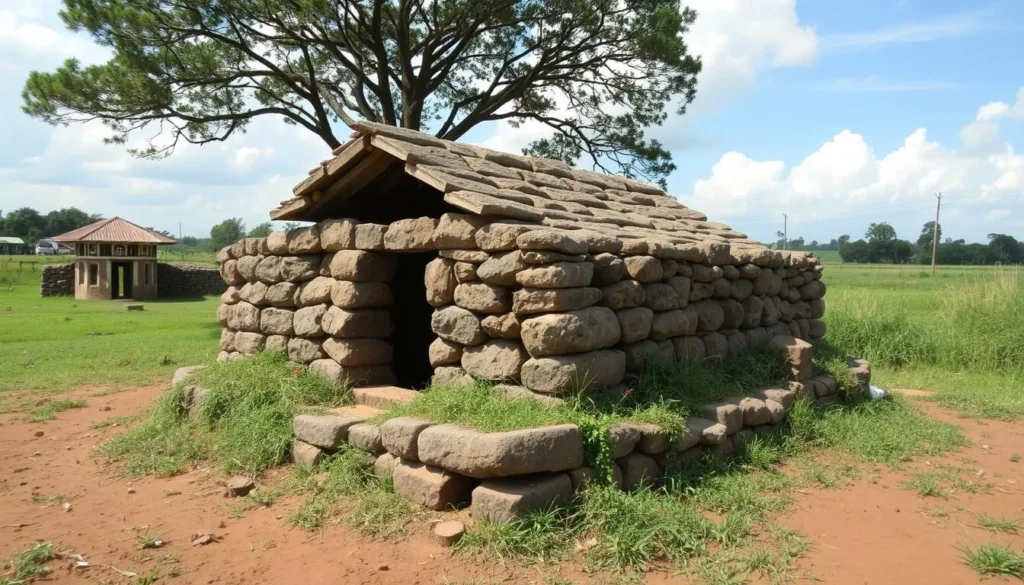
You won’t want to miss the Okomfo Anokye Sword Site, a sacred place that embodies the rich heritage of the Ashanti people. This site is not only a significant historical landmark but also a place of deep spiritual importance.
The Legend Behind the Sword
The Okomfo Anokye Sword Site is rooted in legend, as it is believed to be the spot where the powerful sword of Okomfo Anokye, a renowned priest and advisor to the Ashanti king, was placed. According to tradition, the sword was commanded to come down from heaven and was then buried at this site, signifying the divine authority of the Ashanti kingdom. Visitors to the site can experience the reverence with which local people treat this sacred place.
Spiritual Significance to Ashanti People
The Okomfo Anokye Sword Site remains a place of spiritual pilgrimage for many Ashanti people seeking blessings or connection to their ancestors. It is essential for visitors to understand the proper etiquette expected when visiting this sacred site, including dressing appropriately and behaving respectfully. Keep in mind that while photography is generally permitted, you should approach the site with respect for its deep cultural and spiritual significance.
- Understand why the sword site remains a place of spiritual pilgrimage for many Ashanti people seeking blessings or connection to their ancestors.
- Learn about the proper etiquette expected of visitors to this sacred place, including appropriate dress and behavior.
- Experience the reverence with which local people treat the site, offering insight into the continuing importance of traditional spiritual beliefs.
- Discover how the sword site connects to broader Ashanti cosmology and beliefs about the relationship between the physical and spiritual worlds.
- Keep in mind that while photography is generally permitted, visitors should approach the site with respect for its deep cultural and spiritual significance.
Kumasi Zoo and Wildlife Experience
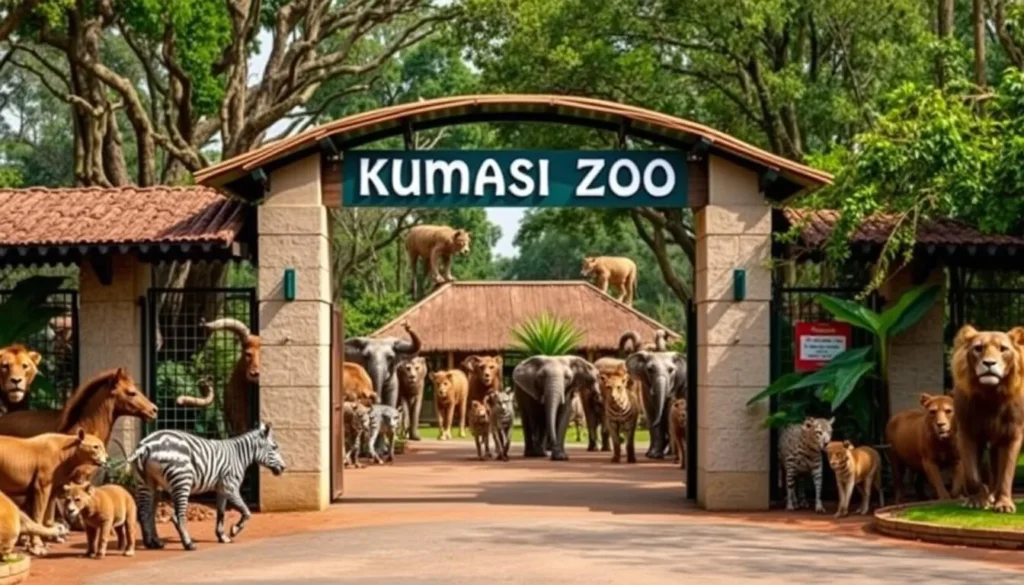
As you explore Kumasi, a visit to the Kumasi Zoo offers a unique wildlife experience. The zoo is home to a diverse range of animal species, some of which are endangered.
Notable Animal Species
The Kumasi Zoo is known for its collection of notable animal species. You can see various primates, birds, and reptiles, making it an exciting place for families and wildlife enthusiasts. The zoo’s efforts in maintaining genetic diversity for animals facing habitat loss in the country are commendable.
Conservation Efforts
The zoo is involved in several conservation initiatives. These include breeding programs for endangered species and educational initiatives aimed at local people, especially schoolchildren, to foster conservation awareness from an early age. The zoo also manages water conservation and implements sustainable practices to minimize environmental impact. However, there’s still a need for continued support and funding for these conservation efforts. Planning your visit on weekdays rather than weekends can make for a more peaceful experience, spread over a few days.
- Learn about the zoo’s breeding programs for endangered species that help maintain genetic diversity for animals facing habitat loss in the country.
- Understand the educational initiatives aimed at local people, especially schoolchildren, to foster conservation awareness from an early age.
- Discover how the zoo manages water conservation and sustainable practices within its operations to minimize environmental impact.
- Appreciate the challenges faced by conservation efforts in Ghana and the need for continued support and funding.
- Consider visiting during weekdays rather than weekends to have a more peaceful experience with fewer crowds and better opportunities to interact with staff about conservation work.
Kumasi, Ghana: Best Things to Do for Food Lovers
As you explore Kumasi, you’ll discover that the city’s food scene is a reflection of its rich cultural tapestry. The city offers a diverse range of culinary experiences that cater to both local and international tastes.
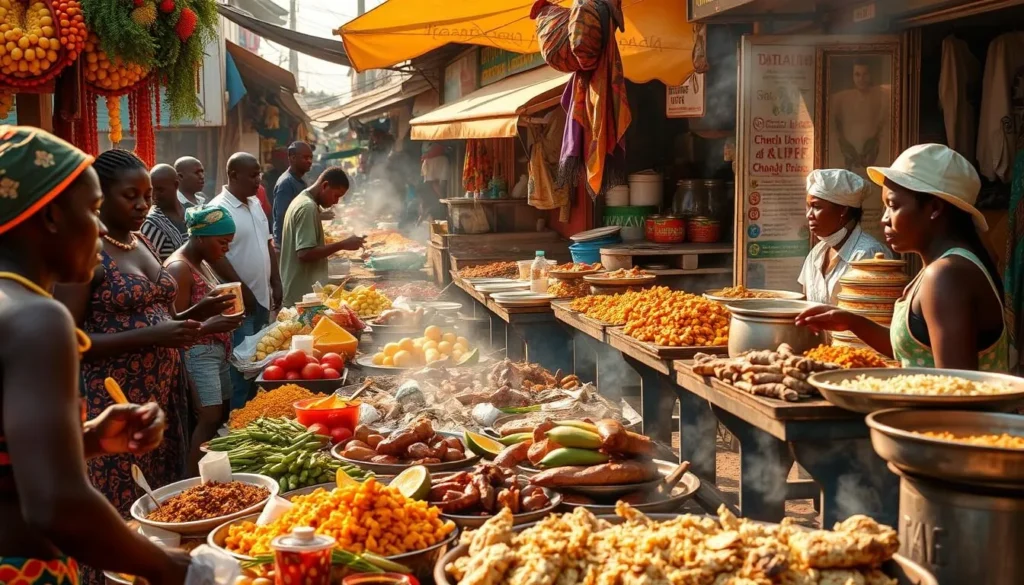
Must-Try Traditional Ashanti Dishes
When in Kumasi, you must try the traditional Ashanti dishes that are steeped in the city’s cultural heritage. Many foods within Ghanaian cuisine, such as Banku, Kenke, and Fufu, are eaten by hand. The best way to eat these foods is by scooping them with the thumb and first two fingers of your right hand. These dishes are not only delicious but also provide a unique cultural experience.
Some of the must-try dishes include Fufu with light soup or palm nut soup, and Banku with pepper sauce. These dishes are rich in flavor and are a staple in Ashanti cuisine.
Top Local Restaurants and Eateries
Kumasi is home to a variety of restaurants and eateries that offer a range of dining experiences. You can discover Ike’s Café and Grill, a popular place known for its blend of traditional Ghanaian dishes and international cuisine with reliable service. For an upscale dining experience, visit Noble House Restaurant, where you can enjoy authentic Ashanti dishes in a setting with cultural décor.
Other notable places to dine include Vic Baboo’s Café, one of Kumasi’s longest-running restaurants serving both local favorites and continental options in a relaxed atmosphere. For a more authentic and affordable food experience, try the bustling chop bars around Kejetia Market. You can also explore specialized restaurants like Kumasi City Mall’s food court to see how modern dining culture is evolving alongside traditional food options.
Shop for Authentic Kente Cloth in Bonwire
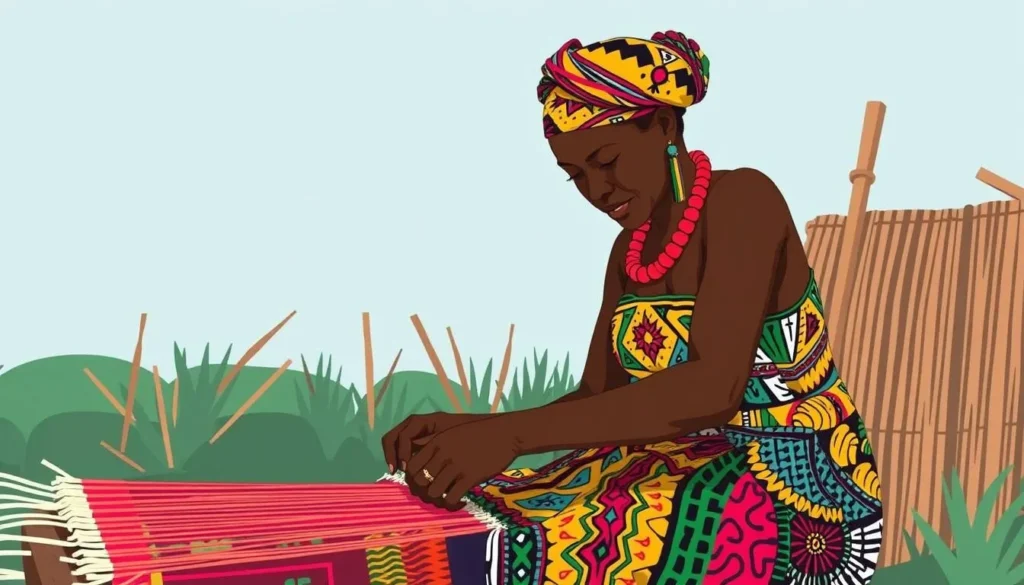
For a truly authentic Kente cloth shopping experience, head to Bonwire Kente Village in Kumasi. Bonwire is renowned for its traditional Kente weaving, and a visit to this village offers a unique opportunity to purchase high-quality, authentic Kente cloth directly from local weavers.
The Significance of Kente Cloth
Kente cloth holds significant cultural and historical importance in Ghanaian society. The intricate patterns and colors of Kente cloth convey messages about Ghanaian heritage, proverbs, and historical events. Understanding the history and significance of Kente cloth enhances your shopping experience, allowing you to appreciate the craftsmanship and cultural value behind each piece.
Selecting Quality Kente Products
When shopping for Kente cloth in Bonwire, it’s essential to distinguish between authentic, hand-woven Kente and machine-printed imitations. To ensure you’re purchasing high-quality items, examine the reverse side of the fabric and check for consistency in patterns. Be aware that price variations are based on the complexity of patterns, quality of materials, and time invested in creating each piece.
- Learn to distinguish between hand-woven authentic Kente and machine-printed imitations by examining the reverse side of the fabric and the consistency of patterns.
- Understand the price variations based on complexity of patterns, quality of materials, and the time invested in creating each piece.
- Discover the different types of Kente products available beyond traditional cloth strips, including ready-to-wear garments, accessories, and home décor items.
- Get tips on negotiating fairly for Kente products while ensuring weavers receive appropriate compensation for their craftsmanship.
- Enhance your shopping experience by asking weavers about the specific patterns you’re purchasing and the stories or meanings behind them.
By being informed and mindful of these factors, you can have a rewarding shopping experience in Bonwire Kente Village, taking home authentic Kente cloth that reflects the rich cultural heritage of Ghana.
Experience Kumasi’s Vibrant Nightlife
As the sun sets, Kumasi transforms into a vibrant nightlife hub, offering a unique blend of traditional and modern entertainment. You can enjoy a night out in this lively city by exploring its various clubs and entertainment venues.
Popular Clubs and Entertainment Venues
Kumasi is home to a range of exciting nightlife spots. Some popular options include local bars with live music, modern clubs with international DJs, and cultural centers hosting traditional dance performances. Make sure to check out the latest venues and events during your visit.
| Venue Type | Features | Recommended For |
|---|---|---|
| Local Bars | Live music, traditional drinks | Cultural experience |
| Modern Clubs | International DJs, contemporary decor | Those who enjoy modern nightlife |
| Cultural Centers | Traditional dance performances, local artisans | Those interested in local culture |
Safety Tips for Night Outings
When enjoying Kumasi’s nightlife, it’s essential to travel with a group and be mindful of your surroundings. Keep in mind that using reputable taxi services or ride-sharing apps can enhance your safety. Consider joining an organized tour for your first night out to experience multiple venues with a knowledgeable guide, ensuring a trouble-free trip.
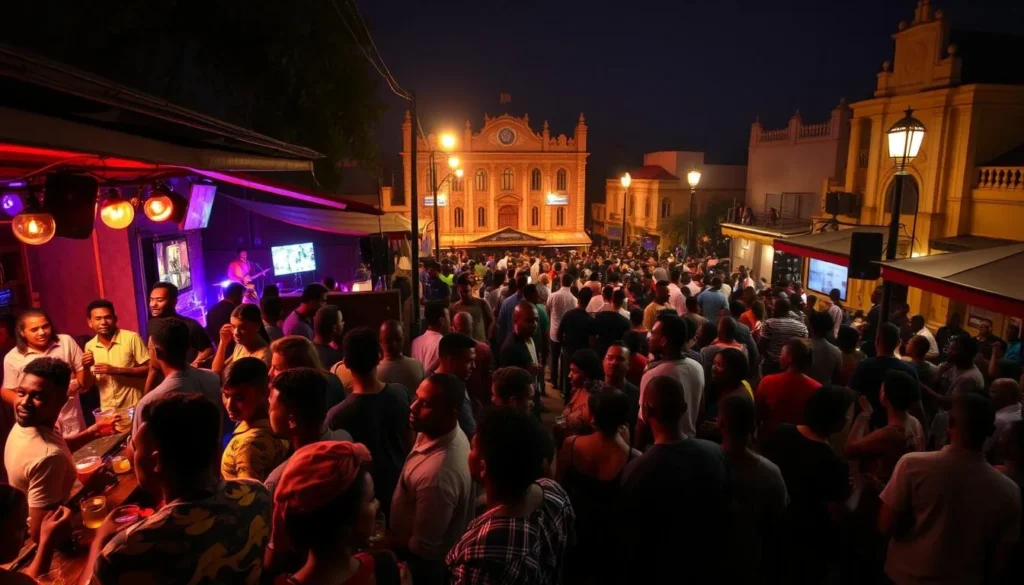
Day Trip to Lake Bosomtwe
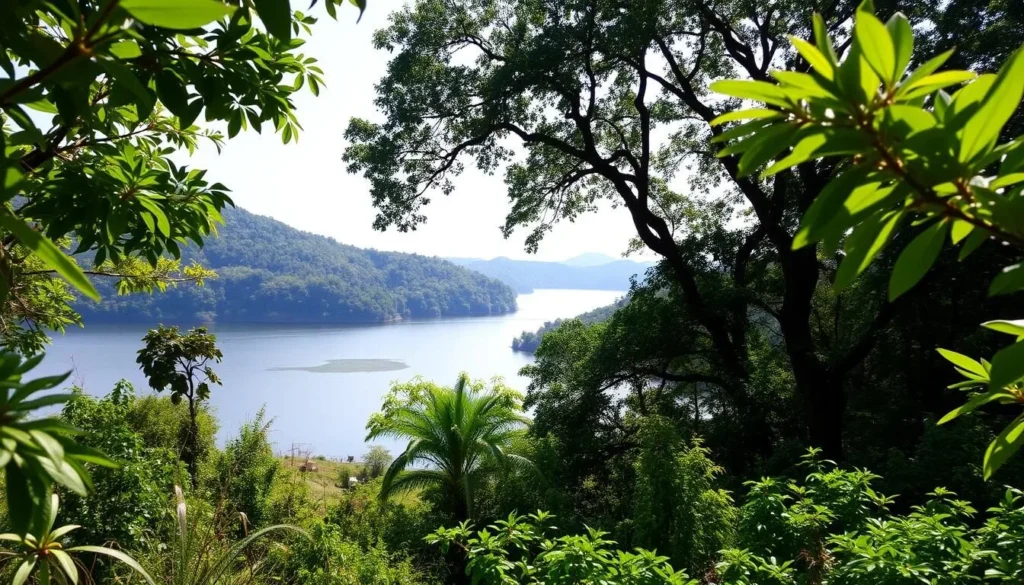
Lake Bosomtwe, a stunning natural wonder, is just a day trip away from Kumasi, Ghana. This beautiful place offers a mix of natural beauty and cultural significance, making it an ideal destination for travelers.
Natural Beauty and Activities
The lake is surrounded by lush greenery, creating a serene atmosphere that’s perfect for a day trip. You can enjoy various activities, such as boat rides on the water or simply taking in the breathtaking views. Local communities still practice traditional fishing methods, including a unique forward-facing paddling technique developed specifically for this lake.
Cultural Significance of the Lake
Lake Bosomtwe holds great spiritual importance to the Ashanti people, who consider it a sacred place where their souls come to rest after death. You can learn about the taboos and customs surrounding the lake, including specific days when fishing is prohibited according to local traditions. Visiting the small lakeside villages allows you to experience a way of life closely connected to the water and its spiritual significance. You can also hear local legends about the lake’s formation and the supernatural beings believed to inhabit its depths.
Planning a day trip to Lake Bosomtwe is a great way to experience the natural beauty and cultural richness of the region. It’s a place that leaves a lasting impression on its visitors.
Visit the Bobiri Forest Reserve and Butterfly Sanctuary
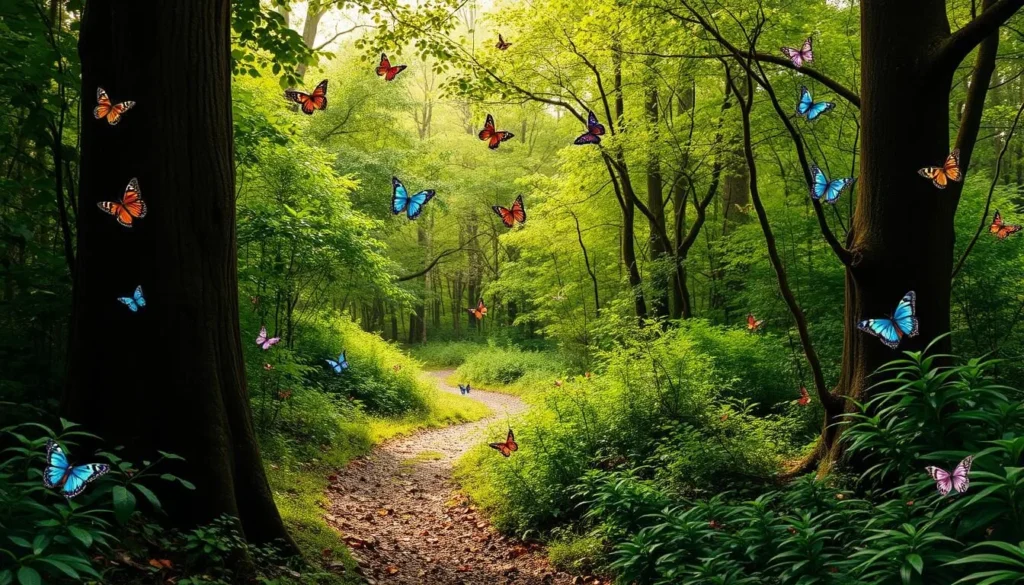
The Bobiri Forest Reserve and Butterfly Sanctuary, situated just outside Kumasi, offers an unforgettable experience amidst lush greenery and vibrant wildlife. This haven is home to a diverse range of flora and fauna, making it an ideal destination for nature enthusiasts.
Flora and Fauna Highlights
The reserve boasts an impressive array of medicinal plants, towering trees, and a variety of wildlife. As you walk through the forest, you’ll have the opportunity to spot numerous bird species and perhaps even some small mammals.
Guided Tour Options
You can enhance your visit with a guide who can provide insights into the forest’s ecosystem. Options include:
- Book a specialized butterfly tour with knowledgeable guides who can identify different species and explain their life cycles and behaviors.
- Join a botanical guide who can point out medicinal plants and explain their traditional uses in Ashanti healing practices.
- Experience the forest through night tour that reveal nocturnal creatures and offer a completely different perspective on the ecosystem.
- Consider combining your visit with a bird-watching tour, as the reserve is home to numerous colorful and rare avian species.
- Choose between private and group tours depending on your interests, with options ranging from two-hour walks to full-day immersive experiences.
Attend an Ashanti Traditional Ceremony
Attending an Ashanti traditional ceremony is a once-in-a-lifetime experience that allows you to immerse yourself in the rich cultural heritage of Kumasi. These ceremonies are vibrant events that showcase the history, customs, and traditions of the Ashanti people.
Akwasidae Festival
One of the most significant traditional ceremonies in Kumasi is the Akwasidae Festival, held every 42 days. This event honors the Ashanti king and features traditional drumming, dancing, and cultural displays.Visitorscan witness the rich cultural heritage of the Ashanti people during this festival.
Etiquette for Foreign Visitors
When attending an Ashanti traditional ceremony, it’s essential to showrespectfor localcustoms. Here are some guidelines to follow:
- Dress modestly, covering your shoulders and knees as a minimum requirement.
- Learn basic greeting customs to show respect to elders and officials.
- Understand photography restrictions and always ask permission before taking pictures of people or ritual objects.
- Consider joining a guided group tour to ensure you follow the proper protocols.
- Maintain a respectful distance and follow the lead of local attendees during the ceremony.
By being mindful of these guidelines,visitorscan have a meaningful and enriching experience at an Ashanti traditional ceremony.
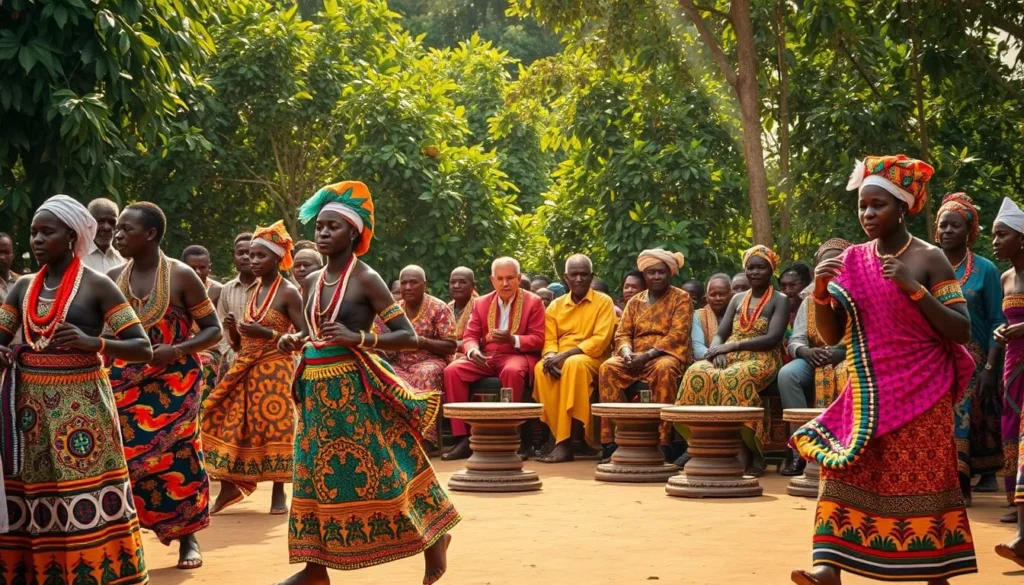
Practical Information for Visiting Kumasi
As you plan your trip to Kumasi, it’s essential to have practical information to make the most of your visit. You need to be aware of the various aspects that can impact your travel experience.
Accommodation Options
Kumasi offers a wide range of accommodation options to suit different budgets and preferences. You can choose from luxury hotels, boutique guesthouses, or budget-friendly hostels. When selecting a place to stay, consider factors such as location, amenities, and reviews from other travelers.
| Accommodation Type | Price Range | Amenities |
|---|---|---|
| Luxury Hotels | $100-$250 per night | Swimming pool, fitness center, restaurant |
| Boutique Guesthouses | $50-$100 per night | Personalized service, free breakfast, Wi-Fi |
| Budget-Friendly Hostels | $10-$30 per night | Dormitory rooms, shared kitchen, social events |
Transportation Around the City
Getting around Kumasi is relatively easy, with various transportation options available. You can use taxis, tro-tros (minivans), or ride-hailing services. It’s also a good idea to walk or rent a car if you prefer to explore the city at your own pace. Make sure to agree on the fare before you start your journey.
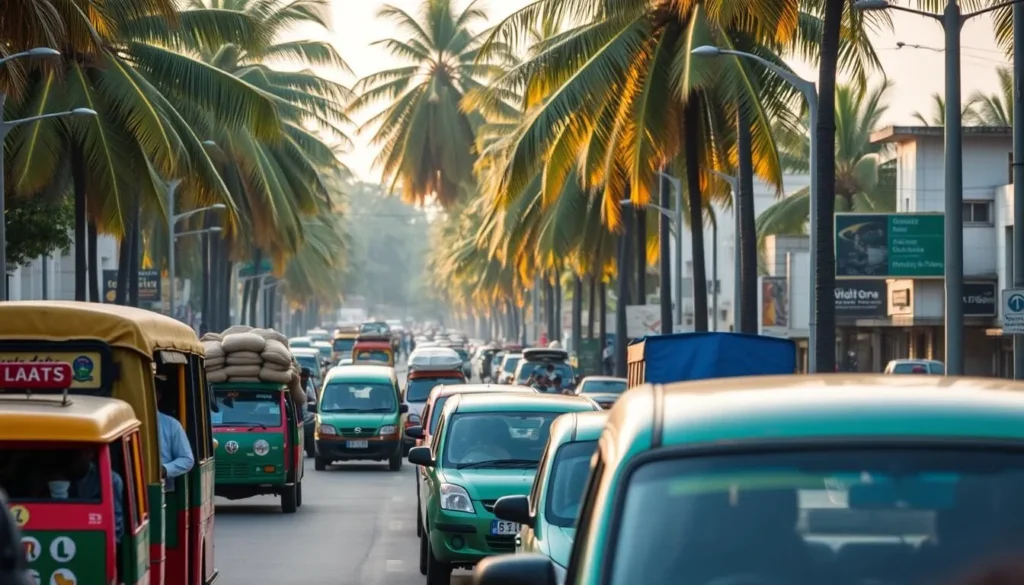
Safety Tips for Tourists
When visiting Kumasi, it’s crucial to take necessary precautions to ensure your safety. Be cautious of overly friendly people who approach you offering unsolicited assistance. Keep valuables secure and avoid displaying expensive items or large amounts of money in public places. Use hotel safes for passports and extra cash, carrying only what you need for each day’s activities. Stay in well-lit, populated areas, especially after dark, and make sure someone knows your itinerary when venturing to less touristy locations.
- Be aware of your surroundings and trust your instincts.
- Avoid traveling alone at night.
- Keep your hotel room door locked and secure.
Conclusion: Making the Most of Your Kumasi Experience
Stepping into Kumasi, you’re not just visiting a city; you’re immersing yourself in a living, breathing cultural tapestry. As you plan your trip, consider the unique cultural immersion that Kumasi offers, distinct from other Ghanaian towns and West African countries. The things that make Kumasi special—its authentic cultural traditions, bustling markets, and historical significance—require an open mind and willingness to step outside typical tourist experiences.
To make the most of your trip, consider extending your stay to explore nearby attractions. Many travelers mention in their reviews that they wished they had allocated more time to explore this fascinating place. By reading reviews from other travelers, you can gain valuable insights into specific tour operators, restaurants, and attractions before finalizing your itinerary. Remember, Kumasi provides a window into traditional Ashanti culture that you need to experience to truly understand Ghana’s rich cultural tapestry.
The above is subject to change.
Check back often to TRAVEL.COM for the latest travel tips and deals.
